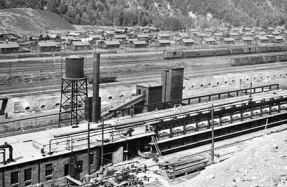
In November of 1952, C.D. Orchard, then British Columbia’s Deputy Minister of Forests, addressed the Canadian Institute of Forestry in Montreal.1 It was not unusual for a Deputy Minister to do so, but the topic of his address certainly was, for it signalled a significant new role for the BC Forest Service.
Beyond ensuring a timber supply for the forest industry, the Forest Service would now have a role in the field of outdoor recreation. Orchard’s speech put in motion a system that has created one of the best park systems in the world.2
Following the creation of Strathcona, BC’s first park, in 1911, there was no formal plan for provincial parks.
Parks were established in a random manner, generally from proposals put forward by various advocacy groups such as the Alpine Club of Canada, the BC Mountaineering Club, and various boards of trade and chambers of commerce.3 Many parks were championed by members of the public, including prominent conservation-minded individuals such as provincial botanist John Davidson and Dr. Bert Brink, both members of the Vancouver Natural History Society.4
British Columbia’s earliest parks—Strathcona, Mount Robson (1913), and Garibaldi (1920)—were joined over the next two decades by Tweedsmuir (1938), Wells Gray (1939), Hamber (1941), and Liard River (1944). These offered superb natural areas but were remote and not easily accessible to the general public.




